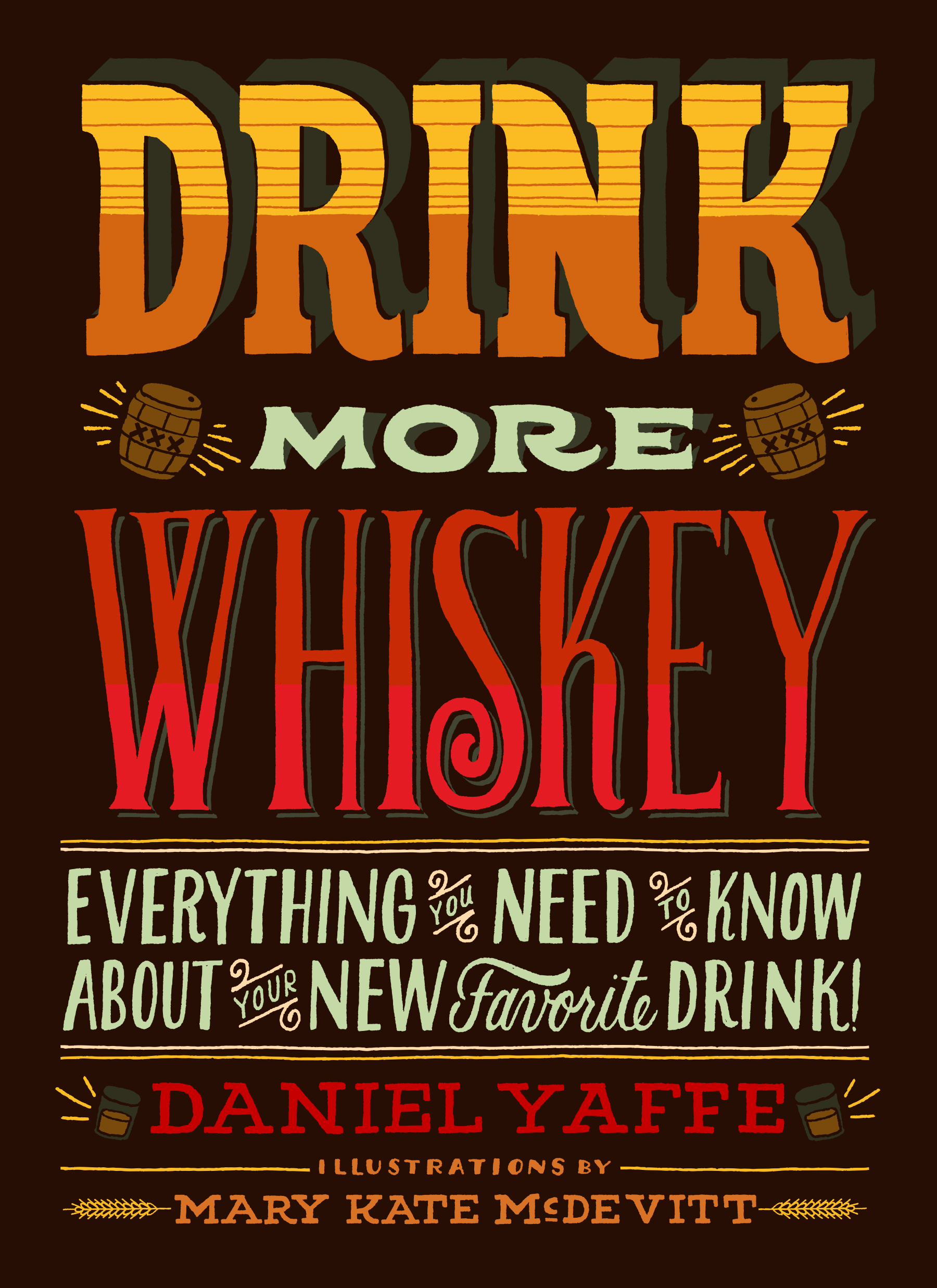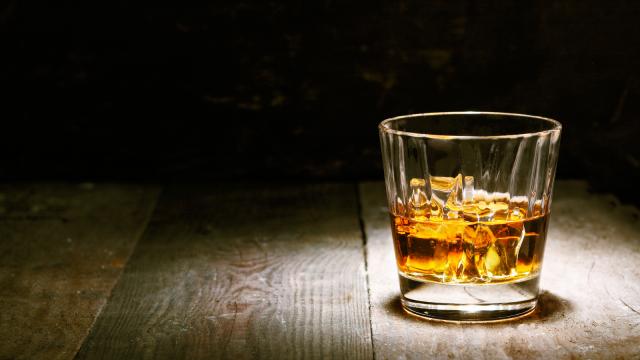Just as gin in Britain and vodka in Russia, America’s most renowned for its whisky. This delicious amber liquor once helped turn the tide of the Civil War, it survived Prohibition, and is now once again finding its way into the tumblers of a thirsty public. In his new book, Drink More Whiskey, Daniel Yaffe explores the fascinating history — and current state — of America’s signature spirit.
The namesake of bourbon is Bourbon County, Kentucky, by all accounts the metaphysical center of the bourbon world even though no bourbon is actually made within the county limits. In fact, bourbon can be made anywhere on American soil; a bourbon made in Honolulu would have the same seal of approval as one made in Bardstown, Kentucky. Legend has it that the name bourbon stuck because Americans were brown-nosing the French (to whom they were shipping loads of whisky in French-owned New Orleans). Bourbon, named after a gallant ruling family in France, was a word that the French could pronounce with a certain je ne sais quoi. As a form of gratitude to France’s aid in the Revolutionary War and because of their colonial proximity to the early United States, enclaves of the American South have complex ties to the French. Bourbon County is hardly the only area whose name was borrowed from la République française. The cities of Versailles (pronounced with a Southern accent, Versales) and Paris are nestled in the Kentucky countryside not far from Louisville.
Bourbon is now being produced across the United States, but Kentucky remains the symbolic and physical heart of bourbon making. More than 80 per cent of US bourbon comes from Kentucky, and it is where the culture continues to flourish. There are more barrels of bourbon sitting around Kentucky right now than there are people in the state. Abraham Lincoln, who was born in Kentucky and saw it as a key region in the Union’s fight against the Confederacy, once famously said of the state, “I hope to have God on my side, but I must have Kentucky.” Its beautiful rolling hills, ancient oaks, and white picket fences are carbon copies of my Civil War daydreams during American history class. Although I wasn’t old enough to fit bourbon into my report about General Robert E. Lee, it was just as much a part of the battle as bayonets and blood. Lincoln knew whisky was important to keep his troops’ morale afloat and condoned General Ulysses S. Grant’s drinking habits, even inquiring as to what brand Grant drank so that he might give bottles to the rest of his generals. Working on managing your own troops? Grant is said to have loved OLD CROW bourbon, a brand you can still find at the back of the bottom shelf in liquor stores everywhere.
Kentucky’s bourbon regions are in the absolute middle of nowhere. Aside from world-famous horses and delicious bourbon (which many locals will tell you are both the result of the wonderful limestone-filtered water), you’ll find an occasional McDonald’s and a whole lot of churches. Although at one time it was home to hundreds of small-farm distilleries, Kentucky was also one of the hotbeds of the temperance movement. Even though booze has been legal in the United States since 1933, much of America is still living under prohibition. To this day, around 80 of the 120 counties in Kentucky are dry or moist. (The term moist describes a county that falls somewhere between wet, which allows the sale of alcohol in liquor stores and bars, and dry, which prohibits the sale of alcohol everywhere. Many dry counties are moving in this direction to sell booze in restaurants and other venues to take advantage of tax opportunities, though residents still won’t be able to head down to the corner shop for a bottle.) The other 40 wet counties in the state have the most amazing drive-through liquor stores I’ve ever seen.
Historic bourbon territory is relatively small, with its farmhouse-dotted fields stretching only a couple of hours from end to end. It’s a juxtaposition of idyllic pastures and white-bread middle-American suburbia. Bourbon still fits well into Southern culture as a panache of small-town porch life. As noted earlier, the first whiskies in the Americas were made around Pennsylvania, but the practice started to move south when the government began giving four-hundred-acre land grants to settlers to grow corn. The strategy behind the giveaway was to expand west, have a food safety net based on a multipurpose grain, and put a layer of settlers between the government and any hostile neighbours. If you recall anything from your high-school history class, the Whisky Rebellion is lodged somewhere in your brain between the (first) Tea Party and the Emancipation Proclamation. The rebellion was made up of settlers on the frontier protesting a new tax on whisky. Since the Northeasterners drank more wine and cider and made far less whisky, Westerners felt that the tax fell on them unfairly. This was, of course, a generation that had fled from the unfair taxes of the British and was still allergic to big government. The rebels were quelled by the military in 1794, and soon after, many moved south to flee oppressive government regulation. It wasn’t until Thomas Jefferson repealed the tax and then authorised the Louisiana Purchase in 1803 that whisky started to spread faster than smallpox. With a new frontier, distillers and farmers had more land and easy access to the Mississippi River, a water route that allowed them to trade their spirits with the rest of the world.
Some of the most famous bourbon brands got their start just about the same time the government was buying land from Napoléon. BUFFALO TRACE‘s oldest building dates back to 1792 and still sits on the lush banks where buffalo used to cross the Kentucky River on their seasonal migrations. Evan Williams was setting up his distillery in 1783, and the JIM BEAM brand has had family members involved in whisky for seven generations, led by Mr Jacob Beam. Bourbon is the drink of American history.
Kentucky continues to embrace bourbon’s Southern roots and is promoting bourbon as a historical cornerstone of the South. To promote whisky tourism, the city of Louisville has even set up an urban bourbon trail through Louisville bars. At your sweaty fingertips you have all the best bourbon and most authentically American cocktails in the world. Although Kentucky senator Henry Clay popularised the mint julep before Prohibition, the refreshing drink in the iconic frosted silver cup is still revered in the South with iconic gusto. Since 1938, the mint julep has been the official drink of the Kentucky Derby, with more than one hundred thousand sold at Churchill Downs every year. If your bet has paid out, you can also try a premium $US1,000 mint julep made with the official bourbon, WOODFORD RESERVE, mint grown in California, and ice imported from France, all served in a hand-engraved julep cup. It’s an absurd, over-the-top drink, but the money all goes to charity.
Unlike wineries that might produce only expensive high-end bottles, most distilleries turn out a range of whiskies to satisfy an array of consumers and pay cheques. Buffalo Trace makes bottom-shelf blends like ANCIENT AGE that you’re likely to find collecting dust at the corner store, but they also make some of the most expensive bourbons money can buy, including PAPPY VAN WINKLE, the extremely rare and old bottles that are auctioned online for the price of a flat-screen TV (even liquor stores in towns near the distillery get only one or two bottles a year). Although the same equipment is used for the whiskies, differences come from the specific percentages of grain, where the barrels age in the warehouse, and which barrels are chosen for a bottling.
There are fewer than a dozen whisky distilleries in the South, with the majority of Kentucky bourbons coming from only six of them. Although sipping on a MAKER’S MARK in a hotel in Singapore might lead you to think that the alcohol is made in a giant factory, in reality, most bourbon distilleries (including Maker’s Mark) are family heirlooms and retain the personal charm you might expect from a local diner. Brands are often named after familial legends or are nods to iconic bourbon pioneers and are often woven with stories on the bottles.
Jim Beam, for example, has the name of the family all over it. Although the business was actually started by Jacob Beam in 1795, Jim took over four generations later and helped to continue the line that is now headed up by the seventh generation. The brand also has a small-batch bourbon, BOOKER’S, which was named for Jim’s grandson. On the bottle of JIM BEAM WHITE LABEL, you can trace the ancestry of the brand. Jim Beam’s cousin was the first master distiller at HEAVEN HILL, a large family-run distillery that makes ELIJAH CRAIG and EVAN WILLIAMS. It’s a company that still has a Beam family member as its master distiller. Bourbon is a wonderfully small and incestuous world.
Established in 1888, the FOUR ROSES brand moved into its current distillery in 1910. The building, done in colonial Spanish style, is the centre of bourbon land. The brand’s namesake is a family story unto itself. After courting a woman for ages, Paul Jones Jr., the founder of Four Roses, invited her to a dance and told her to wear a corsage of four roses if she accepted his marriage proposal. She showed up with massive roses around her wrist and the rest is history. Coincidentally, since 1904, the rose has been the official flower of the Kentucky Derby: the winner is draped with a blanket of red roses. The Four Roses brand has been iconic throughout American history: it sits on the top of Times Square in Alfred Eisenstaedt’s famous photograph of a VJ Day soldier taking a woman into his arms on the street. It was also one of the big brands that produced cheap and massive quantities of alcohol post-Prohibition. Although Four Roses stopped sales domestically in the 1950s to focus on international distribution (it’s still big in Asia), the brand picked itself up in the United States in 1996 and is growing strong with a higher focus on smaller-batch quality.

Excerpted with permission from Drink More Whiskey: Everything You Need to Know About Your New Favourite Drink [Top Image: stockcreations]
